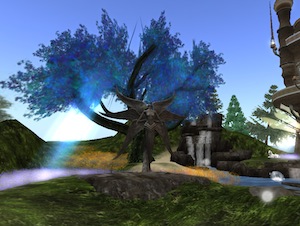 It’s safe to say that one of the most discussed areas of virtual environments is the link between the ‘real’ and the ‘virtual’. Like any philosophical debate, there’s a minefield of perspectives, preconceptions, research and outright conflict. So to attempt an objective discussion on ‘mapping’ the parallels between the two spheres is quite an undertaking, and that’s what Dmitri Williams has done.
It’s safe to say that one of the most discussed areas of virtual environments is the link between the ‘real’ and the ‘virtual’. Like any philosophical debate, there’s a minefield of perspectives, preconceptions, research and outright conflict. So to attempt an objective discussion on ‘mapping’ the parallels between the two spheres is quite an undertaking, and that’s what Dmitri Williams has done.
I’ve spent the past six weeks digesting Williams’ lengthy piece titled The mapping principle, and a research framework for virtual worlds. Attempting to summarise the whole is nearly pointless and I’d strongly recommend taking the time to read the whole paper, as it addresses some key issues that are far from resolved.
What’s particularly appealing to me with the paper is its direct dissection of some of the hyperbole around the validity of mapping the real to the virtual, and the commitment to a research framework that may help drive some higher quality research into the future. The framework amongst other things recognises a key issue in virtual worlds research – comparing like with like:
Therefore a strong assumption of this framework is that we cannot automatically treat virtual worlds as equivalent to one another. The reasons for this lie in the concepts of code and social architecture… behavior in virtual spaces is governed by software as much as by laws, markets or social norms. In real space we take it for granted that we can walk but not fly, or talk with people who are in hearing distance. These abilities and limitations are not safe to assume in virtual spaces where the affordances and limitations of human actions and interactions are whatever the code says they are. Indeed, they may all be flipped. Code may also control who can interact with whom, when and how.
To the seasoned virtual worlds observer this may seem self-evident, but the development of well thought out research frameworks assists those for whom virtual environments are a subject for investigation and more specifically those who have no significant experience with virtual worlds but recognise their value for expanding knowledge. As Williams says: “the field of virtual worlds research is poised to take off”, and work like this is going to help ensure the momentum has some sort of guidance system.
It’s also worth spending some time sifting through the comments on the paper’s blog post on Terra Nova, as there’s some significant commentary and debate on the paper and related issues.
Over to you: if you’re interested in virtual worlds research, do you see the fleshing out of the mapping concept a worthwhile pursuit?
Recent Comments